|
Everybody has to
start somewhere.
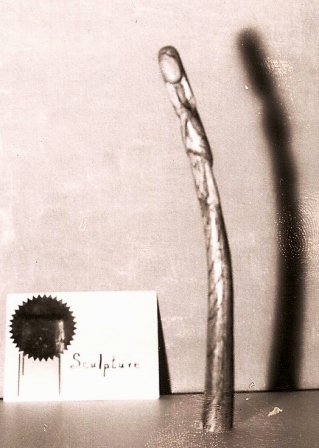
Iphegenia (ca.1955)
Carved
from a stick with my Brownie Scout knife, this was
my first exhibited sculpture, which took 3rd in
the Adult Novice class, and was bought by a
collector of primitive art. At the age of 12, my
artistic career was launched!
|
|
Artist's
statement:
When trash
talks, I listen. It tells me how to
reconstruct it, giving it new life as
sculpture. The native shapes of the
salvaged substances suggest new
configurations, sometimes influenced
by the art of ancient civilizations
which used the materials at hand to
depict facets of their culture. I'm
fond of reflective surfaces,
transparency, and the eloquence of
negative space. And I have a love/hate
relationship with Styrofoam, with its
paradoxical ability to occupy large
amounts of space with very little
substance (not unlike some public
figures). My ambition is to repurpose
as much single-use "disposable"
material as possible in my time on
this fragile earth, our island home.
|
|
|
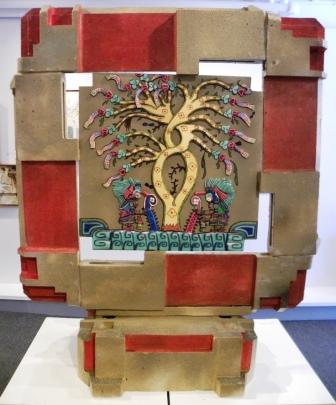
The Great Goddess / World Tree
World Tree view
Photo courtesy of Vid Mars
|
About
this group of assemblages:
I have a deep affection
for the beautiful Mexican state of Oaxaca and its
wonderful people, who have given me a profound
appreciation of their ancient heritage, and of the
traditional arts that are practiced today just as
they were centuries ago, using the resources that
abound in the Valley of Oaxaca.
|
Monte Alban: Transfer of Power
expanded polystyrene
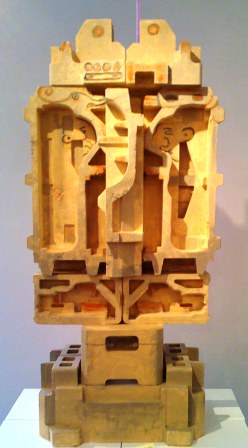
Inspired by stele VGE-2 at Monte
Alban, Oaxaca, Mexico
|
|
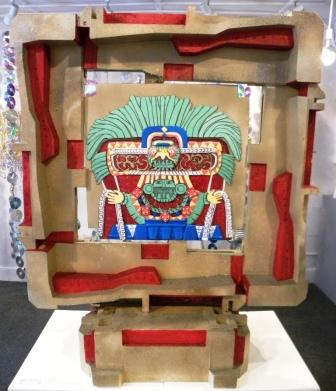
The Great Goddess / World Tree
The Great Goddess view
Photo courtesy of Vid Mars
|
The elaborate mosaics of "The
Great Goddess / World Tree" were excised and pieced
together from produce and meat trays from the
supermarket, as were the tomb panel pieces depicting
the mighty Jaguar Ocelotl and the Owl Tecolotl.
Tombs are of great importance in Oaxaca, where
departed loved ones return during the Days of
the Dead (Dias de los Muertos), one of the most
profound celebrations I have ever experienced. |
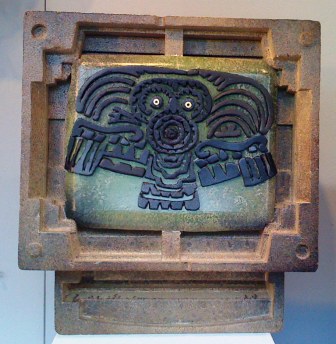
Tomb Panel: Tecolotl (Owl)
Styrofoam packing elements and grocery
trays
|
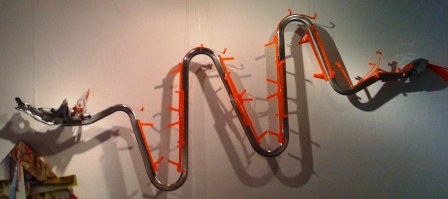
The remaining
piece, "Quetzalcoatl" (above), also came from a
Dumpster - he's made from a reconfigured diner
chair, a bone fragment, vintage buttons (his
fetching green eyes), and red "feathers" that
cushioned the innards of network printers during
shipment.
|
All of the Styrofoam
pieces in this group are constructed from salvaged
expanded polystyrene packing materials, and
altogether represent about half a small Dumpster
load of waste. Formed Styrofoam has most of the
surface characteristics of granite or sandstone,
which allows me to produce realistic "stone"
carvings, and the molded shapes suggest the
niches and angles of ancient structures. In the
spirit of true assemblage, most of the large
Styrofoam elements are "as found."
|
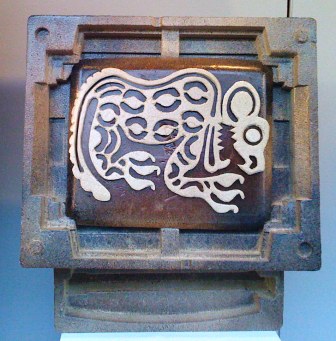
Tomb Panel: Ocelotl (Jaguar)
Styrofoam packing elements and grocery
trays
|
|
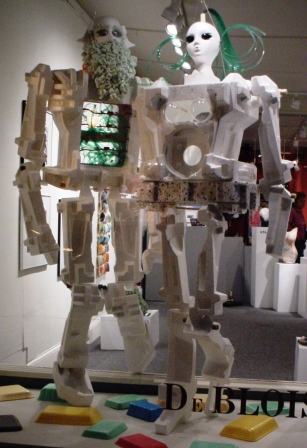
PackMan and Polly Styrene
. .
|
These three
Styrofoam figures were the first of my work with
expanded polystyrene salvaged from dumpsters.
As Commoner's Second Law of Ecology states:
"Everything Must Go Somewhere. There is no 'waste'
in nature and there is no 'away' to which things can
be thrown." (Commoner, The Closing Circle, 1971). |
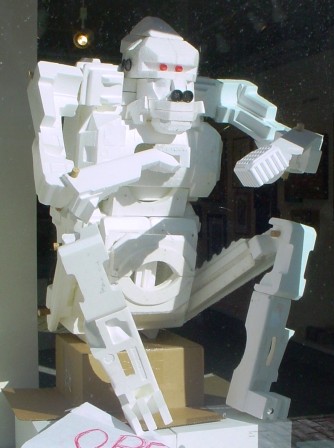
Out of the Box, Into the
Ecosphere
Styrofoam packing pieces, bottle
caps, wine corks
|
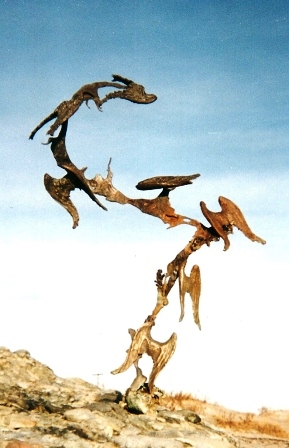 |
Metal.
Icarus (left), true to my favorite
methodology, is an assemblage. Seven sets of
wings were cast in wax from the same mold, then
modified with a torch. Once cast, the wings were
welded to the slender, curving stem, which is
anchored to a fierce chunk of bronze that forms
the base of the piece - products of overpour
or mold blowouts. When all the parts were
assembled, I applied various chemicals to create a
patina that went from bright bronze at the base to
scorched black at the apex. Then I took Icarus to
the beach to get these pictures with the sky and
sun providing the perfect setting.
|
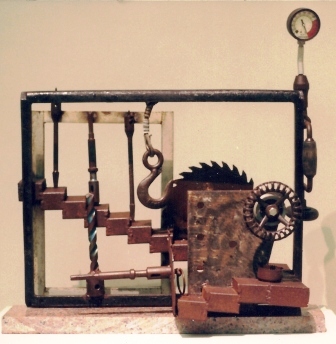
All Hell Cut Loose a Few Steps Out of
Frame
Welded scrap steel |